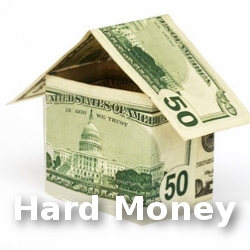Often sellers of notes are firm about not taking a discount for their note, even though they need money now, or sometimes they only need a certain amount of money now. They simply do not like the idea of taking a discount for their note, even if the note is not A grade, or even if the discount is actual market value.
Let’s look at a note, break down the variables, and see what we can achieve. Say a note seller has note for $100,000 at 8% for 30 years with payments of $733.76. The note seller needs $50,000 for medical expenses, but refuse to take a discount on their note.
As a Note Buyer, you are demanding at least a 12% yield. For a little calculator practice, what is the price you would pay for the entire note? Did you come up with $71,335.37? This discount is out of the question for the seller, and they are adamant about not taking a discount. Is there a method to get the note sellers their money without discounting the principal?
One method of solving their problem of needing cash, but not wanting to take a discount on the face value of the note is to offer to buy half of the balance of the note for half of the remaining payments, and after receiving those payments, buy the 2nd half of the note. Let’s look at a note, break down the variables, and see what we can achieve.
N = 180 (Half of Number of Months Remaining)
I/YR= 15.98 Wow! The Face Interest Rate Doubled from 8%
PV = $50,000 (Half of the Balance of the Note)
PMT = $733.36
FV = 0
Rule of Thumb: When you purchase half the note for half of the remaining payments, your yield will double. You will receive 15.98% yield no matter the payment amount or balance.
As a Note Buyer, you will enjoy an almost 16% yield, yet there appears to be no discount because the balance was $100,000 and you are purchasing $50,000 now and another $50,000 in 180 months. At the end of 180 months is where the discount will really be visible and might present problems. If you follow on a calculator, at the end of 180 months, the note balance is only $76,782. If you purchase the remaining payments for $50,000, this is a 65% discount.
A better way might be to merely purchase the first half of the payments for half the note balance and let the note sellers keep the back half, with a possible first right of refusal. This way you as a Note Buyer would still achieve a whopping 15.98% yield and not have hard feelings or problems after 15 years.
If you are curious, you are asking if you double the face value of the interest rate by offering Half and Half, what happens if you offer a Fourth for a Fourth? Let’s look.
N = 90 ( Fourth of Number of Months Remaining)
I/YR= 31.90 Wow Times Four! The Face Interest Rate Quadrupled from 8%
PV = $25,000 (Fourth of the Balance of the Note)
PMT = $733.36
FV = 0
32% is an excellent yield, isn’t it? But I know many of you are saying, “Tom, I don’t have any money”. Here is the good part. What if you found an investor who requires a 12% yield? If you convinced the note seller to accept the Half for Half offer, what could you make in a commission? Let’s look:
N = 180 (Half of Number of Months Remaining)
I/YR= 12% (Yield Required by Your Investor)
PV = $61,138.49
PMT = $733.36
FV = 0
Remember, your contract with the note seller was for $50,000. This would translate into a $11,138.49 profit. Not bad; not bad at all. It is time for you to play with your calculator. What would be your profit if you purchased the note by the Fourth for Fourth method, and sold to an investor who required a 12% yield?
When you know and understand the concepts of the time value of money and how the different variables relate to one another, the keys to the doors of wealth are open to you.

